A USB cable. A source of joy and a way to improve musical experience offered by music files and streaming services, particularly the hi-res ones, at least for some. For others, it’s an object of mocking because USB transmission is „just ones and zeros”. As a music lover who uses audio files on daily basis as one of basic music media I happily accepted an opportunity to listen to and evaluate the WestminsterLab USB Standard cable in my system.
Introduction
When on Thursday night last November I visited, same as every year, the Radisson Sobieski hotel to pick up my press pass for Audio Video Show in Warsaw, I also did another thing that I do every year – I visited several room trying to find out some interesting presentations to visit during the Show. In the recent years the AVS has grown so much that it is virtually impossible to visit every room, which forces me to create a „must see” list. Visiting at least Sobieski Radisson a day before the Show allows me to add some positions to the list. One of the rooms I visited that night featured a system that already played music. To be exact, the setup process was still not finished as the guys involved were still looking for optimal performance in particular conditions. It was one of the Audio Atelier rooms on the second floor (if I remember correctly). I met there an old friend, Andreas Friedl (Trenner&Friedl) who was setting up the latest speakers developed by this Austrian company. I am talking about the PHI model featuring a single, full-range driver.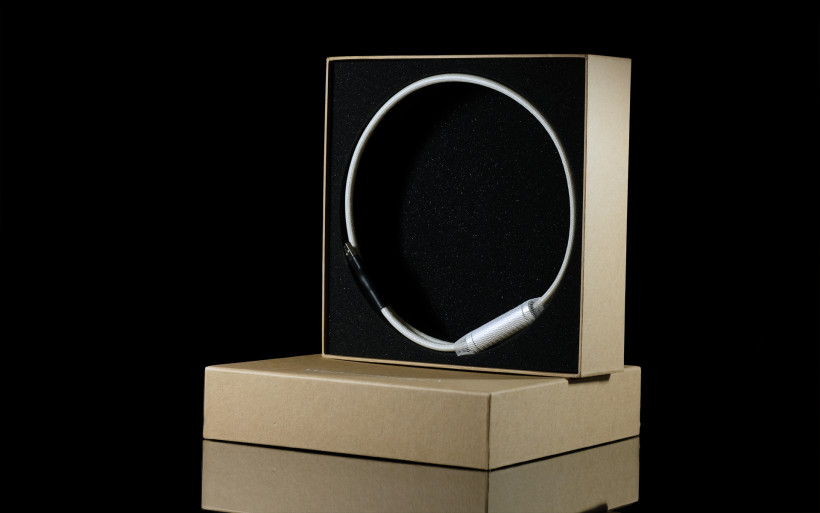
I have to admit I have a weak spot for this type of design. I used to have a pair for several years, that I actually upgraded twice in that time with higher quality drivers, and simply loved the sound they offered. The key quality of this type of speaker is coherence. It’s the sort of coherence that is unachievable for any multi-driver design and that’s one of the reasons I loved to listen to the music on mine. But I digress. What I found curious in the aforementioned room was the fact that the PHI were paired with solid-state power amplifiers. They operated in the Class A, but still, they featured transistors, not tubes that are usually associated with such type of speakers. One thing I had learned though, through many years of visiting the Warsaw Show was that every single system prepared by Krzysztof Owczarek (the man behind Audio Atelier) had always worked, no matter how odd the setup seemed at first or whether it followed popular trends or not (they usually don’t).
So I took a closer look to find out what Krzysztof, together with his partners, had come up with this time. The digital source was Lumin player, and both power amplifiers and cables (or most of them) came from WestminsterLab. As many of those, who visited the room during AVS, surely noticed, Andreas was not the only distributor’s guest present at scene. The other one (in this room at least) was Angus Leung, one of three founders of this brand, who eagerly answered all questions regarding his products, but of the record we spoke also about many other issues and I found these conversations equally interesting. I realize it’s bit off topic, but it’s always interesting to meet a person you can talk to on many different topics, and Angus turned out to be one of them.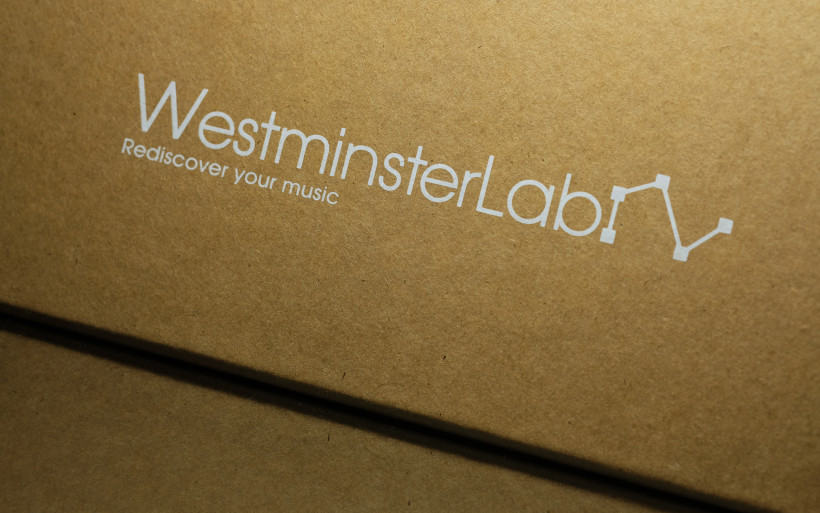
One of my first questions for him was: why did you name your company WestminsterLab? After all, the company’s headquarters are in Hong Kong, not in England. As he explained, they named their company after the Westminster in London, because it was founded while he studied there and it was also there he’d met the other co-founders. Only after Angus graduated from university he moved back to Hong Kong and the business moved with him. Yet, as he emphasized, still many components for their products come from Europe – there was no reason to replace reliable suppliers. I remember also asking him a question that I ask most designers I talk to – what makes your products, in this case mostly cables, different from all the other ones available on the market? Short answer went more or less like that: with countless conducted tests that include both, measurements and listening sessions, with taking care of even the tiniest details that actually effect the performance, making cables by hand, meticulous selection of, not necessarily the most popular, components and solutions, that due to their inherent properties allow designers to achieve the target sound or performance.
What about longer version? Let me quote Angus’ email that I got later:
„For the USB cable, we are one of the first high end manufacturer to design and manufacture USB cable specifically for audio use back in 2007. And it was the first product and it was quite successful back in the days. In terms of our digital cable (so also USB – ed.), our choice of materials in terms of the alloy we use and the optional carbon fibre shielding is quite unique. Most important of all, is our dedication of using bespoke construction and the attention to detail.
Most manufacturers extrude their cables with a machine, the only work they need is just to terminate them. For WestminsterLab, we polish the conductor one by one, coat them one by one, and we put them in teflon tubes one by one, and we twist the cable by hand, hence the possibility of “vari-twist” All conductors are twisted with a varying angle and the formula is construction and length dependent. The result is the sense of ease in the overall sound impression and the amazing finite details which makes the whole performance seemed “real”.”
Another question I asked Angus back in November was: so how would you say do your cables sound like? Give them a try and find out yourself, was his answer. I belong to those audiophiles, who value manufacturers who don’t try to sell me an idea of their products being „the best in the world”, or „sounding right” (which suggests – as opposed to all others) but instead suggest I make my own assessment. They let me decide whether or not I like and value what they have to offer. That’s what, for example, Geoff Merrigan of the TelluriumQ does, and that’s the Angus’ approach too. So yes, he scored some points with me right away :). Let’s get back to my Thursday’s evening visit in the Audio Atelier’s room. When I got there Angus and Adreas were still working real hard hand to hand (which is not as common as you may think when two or more manufacturers share a room during some show) to get the most of the already described setup. Despite the process not being finished yet, what I heard at that time was enough to get this room on my „must see” list, and actually I visited it many times during the three days of the AVS.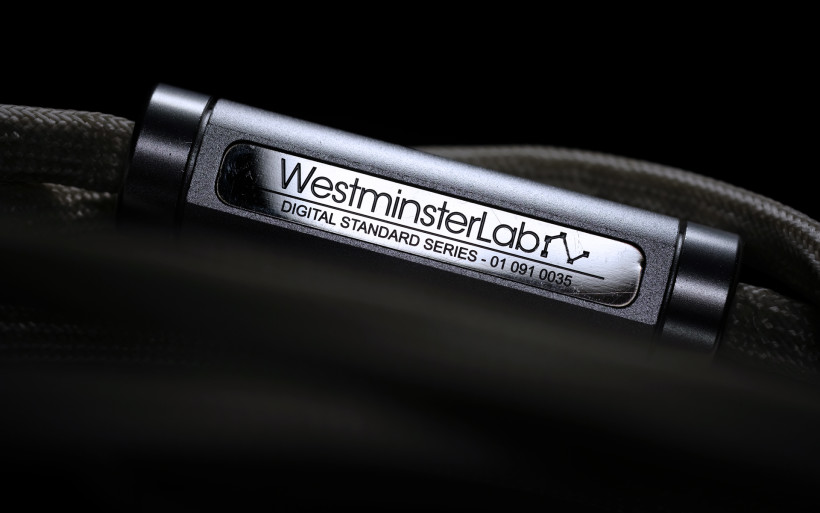
The system delivered the type of performance that I really like – open, musical, effortless and coherent (the latter feature was to be expected considering type of speakers). And it was achieved despite my initial reservations considering pairing single driver speakers with high output (although Class A) solid-state power amplifiers. Since I treat all audio shows as a source of information regarding potentially interesting products (knowing at the same time, that these are not places for ultimate evaluation) already during the AVS I decided to let know the distributor that I would be interested in reviewing at least some of the components of this particular system. For now (we’ll see what the future brings) I got the WestminsterLab USB Standard cable, and the Trenner&Friedl PHI speakers (review pending).
Design
When it comes to audio cables studying their design is not really an option. So what one can use is the information offered by manufacturer plus what an naked eye can see. In the case of WestminsterLab cables manufacturer made a detailed source of information available, namely the so-called white paper. I am not going to quote it all – if you interested you can find it HERE. Instead let me offer you a few most important information from it if you don’t feel like studying the whole document.
According to the white paper, the main goal of WestminsterLab engineers was to: „provide the purest and cleanest signals and power for the audio system”. First they had to decide a type of conductor – after series of trials they decided the solid core design better suited their expectations. The next step was a choice of conductor’s material. As it reads in the document: „The conductor material is one of the most important components in a cable. We research and test different materials, including but not only, very high purity copper, silver, gold, silver-gold alloy, precious metals plated copper and silver.” Many of them offer a very good performance but, according to WestminsterLab’s crew, each of them has its own „signature sound”, and that’s something they wanted to avoid.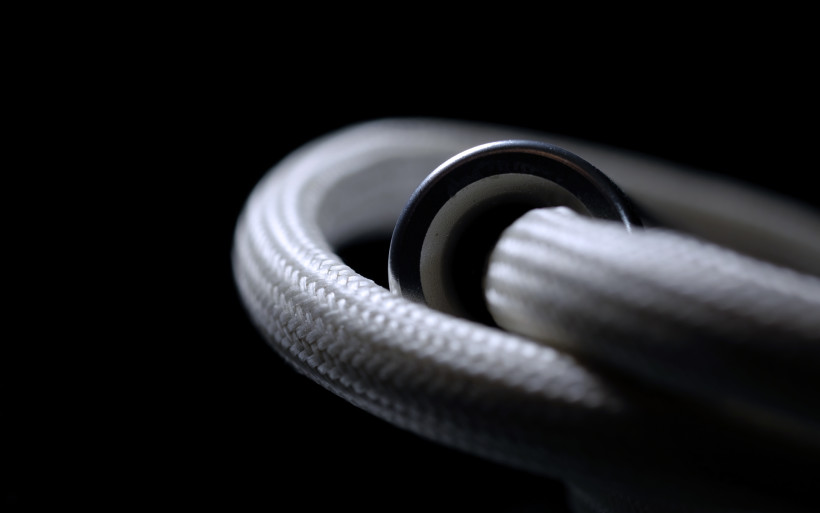
The search for the „perfect” conductor ended with… developing WestminsterLab’s own one they called Autria Alloy. Interestingly, the actually name covers a variety of different alloys developed for brand’s cables. Depending on the gauge, the signal and the type of cables, different types of Autria alloys are used. In some cases one cable utilizes a combination of conductors made of different materials. Each of them however, undergoes extensive heat and cryo treatment after the extrusion process. As the manufacturer claims, the result is a conductive material which is free from material sound signature, free from grain boundaries and a uniformed material properties across the cross section of the conductor. The reviewed WestminsterLab USB Standard cable features two different conductors. One of the alloys is actually 97%+ copper, the other is 95%+ silver, so as you can see this brand is not limiting itself to using only one type of conductor.
In order to achieve less distortion at high frequencies, each conductor is hand-polish to achieve a gloss mirror finish. Than, to prevent oxidation, each of them is treated with a special epoxy based coating. Finally, each individual conductor is then carefully inserted into a PTFE tube by hand. As in many cables, two conductors are twisted together to lower crosstalk (RFI and EMI). Again, WestminsterLab’s engineers found their own, as they claim, better way to do that. To achieve even better results they use so-called Vari-Twist – as the name suggest the angle of the twist varies which is supposed to offer better results than using the same angle through all the length of the cable. And last but not least, shielding. Traditionally a metal foil or braids are used for this purpose, but again guys from WestminsterLab found their own way, and used carbon fibre which offered a better sonic results than any other solution.
At present the WestminsterLab’s lineup consists of four digital cables (BCN, SPDIF RCA, USB and AES/EBU), balanced (XLR) and unbalanced (RCA) interconnects, power and speaker cables. In each case there is only one model but there are two grades of each of them – „Standard” and „Ultra”. The latter is even „better” or more advanced version of each model, and significant price differences suggest that performance wise the progress should be adequate. On the outside both grades can be told apart mostly by different plugs and in some cases by a different thickness. Although Angus emphasized strongly, that none of his cables is thicker than it has to be. Most design differences are hidden inside – it’s the matter of the combination, type, gauges, insulation and construction of the conductor. As explained by manufacturer, the lineup is supposed to be as simple as possible, and that’s why they do not multiply models of each type of cable. Each of them is offered in several standard lengths and pricing correlates with how long cable one needs.
You’ve probably noticed another interesting fact about WestminsterLab’s cables, or their unique approach to how they do things – models don’t have fancy names. That’s why the subject of this review is just the WestminsterLab USB Standard cable in a standard length of 1 meter. It is sold in a simple, but elegant cardboard box filled with a thick protective foam with proper cutout. The cable itself is well-made and finished and a nice metal element that’s placed over it is on the one hand there to dampen unwanted vibrations, and on the other to add an eye-catching element to it. Also, as Angus explained, „the aluminium ring act as a damping device for the external tube, because we use air suspension inside the cable and sometimes the lack of weight of the external tube does affect the sound a bit.” The cable is quite flexible so it is easy to install it in a system. OK, I guess we already know everything there is to know about the design. All there is left to do for me is to find out how the WestminsterLab USB Standard cable affects the performance of my system.
Sound
My go to USB cable is a product of the aforementioned TelluriumQ, the Ultra Silver to be exact. Despite what the name may suggest it is not a silver cable, meaning it is not made of silver – that’s the only fact I was able to „extract” from Geoff, who’s policy is not to disclose almost any concrete information about his products. My ears agree with this information – the Ultra Silver does not sound like a typical silver cable, more like a copper one, if we agree that both types of conductors have some distinct sonic features. This particular model is not particularly expensive (as for audiophile standards, that is) and yet it is a damn good performer. It’s good enough for me so that I don’t really look for alternatives to replace it. Although I admit, that products made by Karol Stavorko (Stavessence) easily outperformed the Ultra Silver. The only issue (for me) is, that while the number on the price tag is similar, the currency symbol is different which makes them more than 4 times more expensive, so they landed on my „maybe some day” list. The WestminsterLab USB Standard is more than twice as expensive as the Ultra Silver, but since the latter is my reference I used it for head to head comparison using both between my custom audio PC as a source of signal and the LampizatOr Pacific D/A Converter.
The first impression. It’s not always there. When listening to various reviewed components sometimes from the very first minute I can hear some distinct sonic feature or features that set said item apart from the one I use in my system. In other cases I need a much longer time to be able to point out what the reviewed product does differently and whether it’s a good change or not necessarily (at least from my perspective). This time it was the former. From the very beginning I felt like the sound opened up and „filled in” with air. To be clear – I’d never complained about the Ultra Silver lacking in any of these features. Not at all! Since I’d reviewed some even much more expensive USB cables I fully realize that other products could outperform the TelluriumQ in some (!) respects but it always comes with a significant cost (I mean price difference) so I’d never really felt compelled to replace my cable with any other.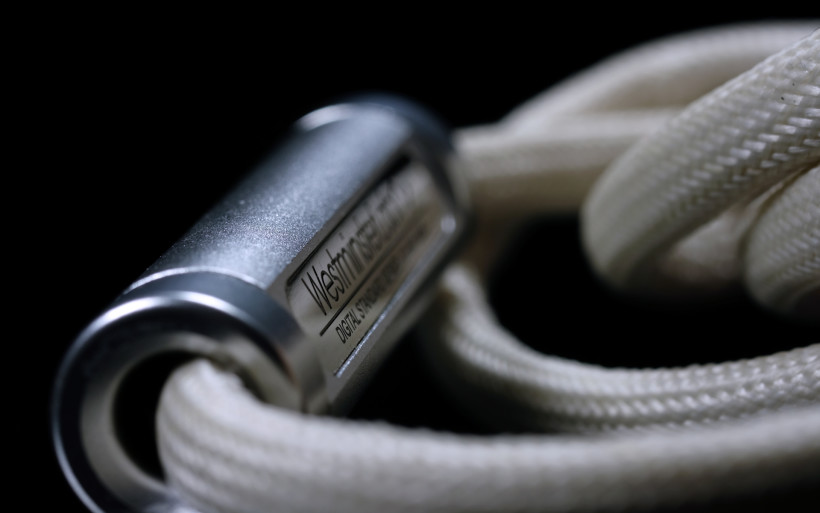
This time though, with WestminsterLab USB Standard, the difference was quite significant. Listening to the music with it after replacing the Ultra Silver felt like I was able to catch a breath of fresh air. Interestingly, this effect was similar to what often (all types of) silver cables introduce to the system (yes, there are some common features that can be associated with the conductor material and that’s one of them). The high quality silver cables amaze with crisp, lively, breathing treble perfectly coherent with midrange and bass. The ones of lower quality sometimes can sound harsh, bright or dry, or in other words – not very pleasant. This time it was obvious from the start that the WestminsterLab USB Standard belongs to the former category, even though it is only partially made of silver alloy. The result, the sound coming from speakers was in some ways spectacular and yet it seemed perfectly natural, there was not even slightest hint of exaggeration or artificiality – none whatsoever! Quite the opposite – these elements were what made this sound more live-like, hence more natural in my ears.
One of the first albums I listened to was one by Christian McBride’s Big Band called „Brincin’ it”. I knew already that even a single trumpet and trombone sounded remarkably with the WestminsterLab USB Standard, based on Trombone Shorty’s recording, which I later further confirmed listening to numerous classic albums by Miles Davis or John Coltrane. But the whole big band from McBride’s recording gave me goose bumps. The performance was spectacular but let me stress this again – also very natural in its power and energy! I listened to it with a smile on my face and my hands and feet tapping the rhythm. The sound wonderfully balanced between a very realistic, meaning bit sharp but ear-friendly sound and this just one step further down the sharpness road that would make it unpleasant. That’s exactly how I remember many concerts with brass instrument. Neither in this one nor any other (at least decently produced) recording the upper midrange or treble sounded too bright, too sharp or too harsh, not grainy. It was sharp and bright when needed, but also smooth as silk when required. Without exaggeration in any of these directions. Only when it came to a few tracks that were not very well produced, the WestminsterLab USB Standard obeying the high fidelity rule showed me the truth about them. That’s exactly what a high quality cable should do.
The richness of the sound, abundance of low level details, good separation, differentiation, insight into texture and timbre of each individual instrument – all of that translated into a very energetic, lively, well-defined, pure, dynamic performance. On the one side the aforementioned high resolution and very good differentiation allowed me to focus on individual performers but on the other hand it did require a bit of effort because the whole presentation was something more than a simple sum of the sound of several instruments. With the WestminsterLab USB Standard my system offered me all these elements that I value so much – a very harmonious, coherent musical spectacle with a natural flow, or in other word very live-like sound. So I had no choice but to listen to this album much louder than I usually do, just for a pure joy of absorbing this incredible, raw energy, to experience the extraordinary dynamics that McBride and his band, benefiting from this USB cable’s (and my system’s) conveyed in this recording. To be honest, I’m not even that much of a fan of big bands, and yet I enjoyed this ride immensely.
Even more so that with the already described rich set of qualities the WestminsterLab USB Standard added still another one that I particularly value – a large, in all three dimensions, soundstage. In most recordings it began at the line between speakers or a bit behind it and expended far beyond it, but, interestingly, also above the speakers. I found it particularly interesting because the height is not a dimension that is often discussed in stereo systems – unlike depth and width of the soundstage, height is quite difficult to record properly hence it can’t really be properly rendered during playback. The width and depth of the stage varying from track to track proved that the tested cable is NOT one of those that force certain spatial presentation on all recordings in the same way. In some of them the whole stage was reproduced between speakers, in others sounds came from way beyond left and right speakers. Music genre didn’t really matter. Whether I played electronic music by Pauszek and Rudź, rock by Pink Floyd, or Monteverdi recorded in the Noirlac Abbey by Michel Godard – in each and every case these particularly spacial albums turned out to sound even more spectacular than I was used to.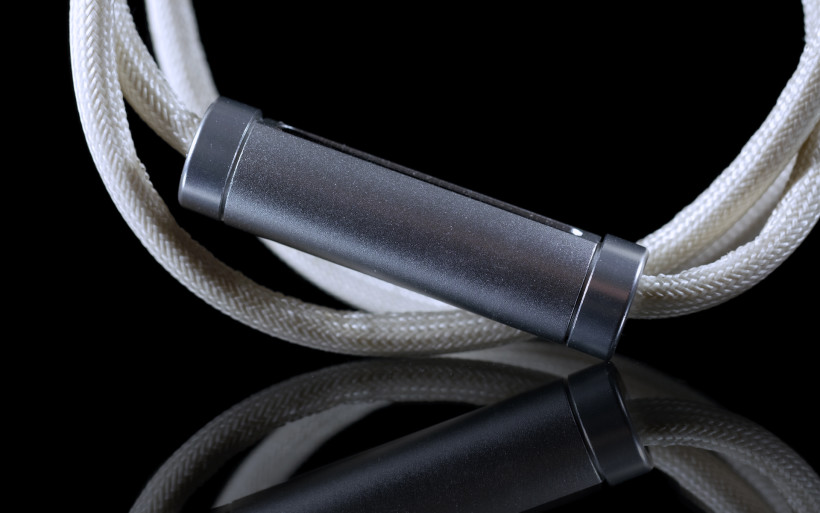
Comparing this performance to one with my TelluriumQ, the soundstage was not really much bigger with the WestminsterLab USB Standard, but since it began a bit further away from the listening position it offered a different, even deeper perspective. Plus there was this particular feature I’ve mentioned before – more realistic placement of sounds in the vertical plane. It created an impression of most phantom images being higher, better defined, although not as „filled-in”, not as „weighty” as with my cable. Particularly in the case of wind instruments, say trumpets, they played higher (I mean physical height) than, say, saxophones, which in real live, assuming similar height of musicians, would be obvious and true. Yes, I do realize that is very difficult to even record this element on tape (or in file) and that usually most of us don’t even pay attention to it, but in this case it seemed that the reviewed cable did a better job in this respect (using information available in the recording) than most competitors I know.
Listening to one of the albums of the great Stanley Clarke pointed my attention towards the other band’s extreme. Maestro’s bass, particularly the electric one, was remarkably tight, fast and delivered a powerful kick, so to speak. I couldn’t help but keep cranking up the volume, because very well controlled and highly resolving way of presenting the whole band, but in this case the bass in particular, simply encouraged me to do so. Sure, I never reached the explosive energy level of the last Clarke’s live performance in Warsaw, but it was loud enough for some of my neighbors to stop talking to me (so even more social distancing for me :)). Comparing the WestminsterLab USB Standard with my Ultra Silver it was obvious that with the latter the bass has even more weight, bit more punch, but the former was in turn tighter and faster. The reviewed cable had also a slight advantage in terms of differentiation of the bass, it also offered a bit better insight into its texture. Having said that I need to emphasize that both these cables are capable of conveying abundance of details and subtleties not only in the bass but across the whole band.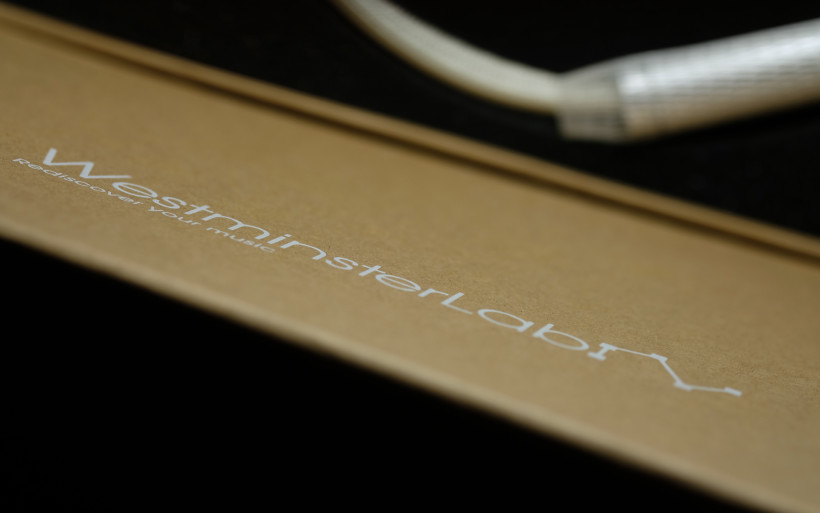
Various tracks with double basses played but such masters as Stanley Clarke, Ray Brown, or Renaud Garcia-Fons, proved that the WestminsterLab USB Standard is fully capable of perfectly conveying transients, going really deep down and delivering as much “wood” as necessary, although possible just a tiny bit less than Tellurium Q (the question is – which version is more “true”). Definitely there was enough of the “wood” to present the size and weight of this instrument, to give each string pluck not only proper speed but also mass and depth. Which was equally true for piano. Whether I listened to archive recordings of brilliant Józef Hoffman, or more contemporary ones of Keith Jarret and Jessica Williams or even the bit experimental ones of Leszek Możdżer I felt each time like I witnessed a performance of a brilliant musician but also a power of a huge, palpable instrument that was present in the room with me. The sound was vibrant, timbre natural, there was a ton of details and subtleties, fast transients, proper sustain, decay and reverb – it was all there, and more. And, which is crucial from my perspective, it was not presented in a cold, highly analytical way, but in a very natural, involving, effortless way the inspired emotions on my side. That’s what we listen to music for, isn’t it? That’s what this cable in a proper system will offer. I’ve mentioned a proper system as there is no magic involved – the WestminsterLab USB Standard will not solve setup’s problems.
I left my favorite vocal recordings for the last and spent several evenings in a row with beautiful female and male vocals of all types. The WestminsterLab USB Standard again presented a bit different approach than the Ultra Silver. From the start it impressed me with its precision, clarity, a deep insight into timbre and texture, and definitely above average ability to differentiate voices. It didn’t even try to add any warmth to vocals beyond what was there, in a recording and maybe that is why they didn’t seem to sound as rich and weighty as with TelluriumQ. The reviewed cable used precision to render bodies or presence, if you will, of vocalists, while my cable utilized rather mass and density of bodies to achieve similarly convincing results. Sibilants in many recordings did not go away with the tested cable, neither were they emphasized – they just sounded natural, being one of many components of vocals, but not an irritating one. The presentation was excelling also in another important area – being highly expressive. All performances of truly charismatic artist such as Etta James, Janis Joplin, Marek Dyjak or Steven Tyler with the WestminsterLab USB Standard transformed into a unique experience, one that sent shivers down my spine.
Also in another music genre, where emotions, drama, are key elements of performance – operas – combinations of realistic, rich sound of vocals, the unique spacial aspect of this presentation and proper scale, dynamics and momentum of the orchestra resulted in me spending a lot of late nights during the “times of plague” listening to numerous wonderfully complex spectacles created in minds of Mozart, Bizet, Rossini, Verdi and so on. It was really hard to stop myself from adding more and more operas to the playlist, as each and every one of them was presented in a remarkably engaging, convincing and highly enjoyable way. Importantly, volume level had no effect on how expressive presentation was which is particularly important when listening to music late at night. Even then listening with WestminsterLab USB Standard in my system was an exciting, highly involving experience that kept me awake, yet relaxed. And that’s a wonderful way to spend time when attending live performances or even meeting other people is not possible.
Summary
High fidelity, no coloration, (quite) flat frequency response, good extension on both band’s extremes, high resolution, good differentiation and PRAT, open, spacious sound – all these are qualities that one expects from every high quality cable. But they need to come in a right mix, one that makes one smile, or cry, or feel some other emotions when experiencing music. Listening to the music is supposed to be a special, highly enjoyable experience. It is supposed to take us somewhere else, to allow us to get away from everyday life, to create an experience expanding way beyond a set of mere sounds played in the background. And that’s what the WestminsterLab USB Standard has to offer. Obviously it is but one component in a complex audio setup and it won’t fix its inherent problems, but it can help it spread its wings, release its full potential. It’s not only a very good but also quite versatile performer that will fit well into most advanced systems. Yet, I believe it will match warm, natural sounding systems (with tube and Class A, maybe also Class D amplifiers) best. It’s openness, high resolution, very good differentiation, ability to deliver low level details, clarity combined with high dynamics and ability to convey tones of energy will be a positive addition to such systems (not only, but particularly to such ones) also because it will not disturb inherent coherence and fluidity of said system’s performance simply making it better, enhancing listener’s experience.
Price (when reviewed):
- WestminsterLab USB Standard: 1390 EUR / 1m
- WestminsterLab USB Ultra: 3090 EUR / 1m
Manufacturer: WESTMINSTERLAB
Associated equipment:
- Analogue front end: J.Sikora Standard MAX turntable, J.Sikora KV12 tonearm, AirTight PC-3, phonostages: Grandinote Celio mk IV, ESE Lab Nibiru V 5.
- Digital source: a passive, custom PC with WIN10, Roon, Fidelizer Pro 7.10, JCat USB Femto card with iFi power supply, Hdplex linear power supply for PC, JCAT USB Isolator
- D/A Converter: LampizatOr Pacific +Ideon Audio 3R Master Time (USB signal regenerator)
- Power amplifier: GrandiNote Shinai, LampizatOr Metamorphosis
- Preamplifier: Audia Flight FLS1
- Loudspeakers: GrandiNote MACH4, Ubiq Audio Model ONE Duelund Edition.
- Interconnects: Hijiri Million, Less Loss Anchorwave, TelluriumQ Ultra Black, KBL Sound Zodiac XLR, TelluriumQ Silver Diamond USB
- Speaker cables: LessLoss Anchorwave
- Power cables: LessLoss DFPC Signature, Gigawatt LC-3
- Power: Gigawatt PF-2 MK2 and Gigawatt PC-3 SE Evo+; a custom power line with Gigawatt LC-Y in-wall cable; Gigawatt G-044 Schuko and Furutech FT-SWS-D (R)
- Racks: Base VI, Rogoz Audio 3RP3/BBS
- Anti-vibration accessories: ROGOZ-AUDIO SMO40 and CPPB16 platforms and ROGOZ AUDIO BW40MKII feet, Franc Accessories Ceramic Disc Slim Feet and Wood Block Platform



































